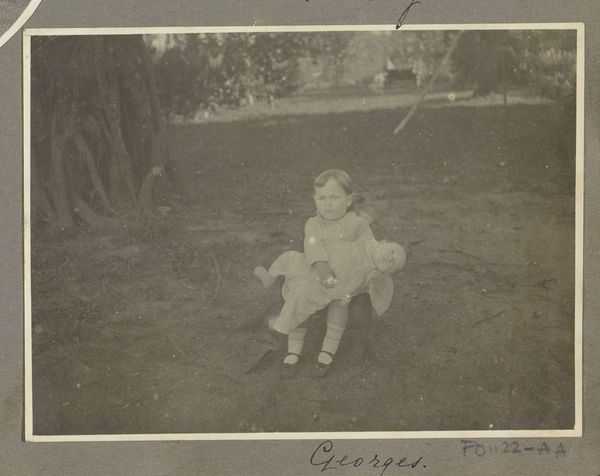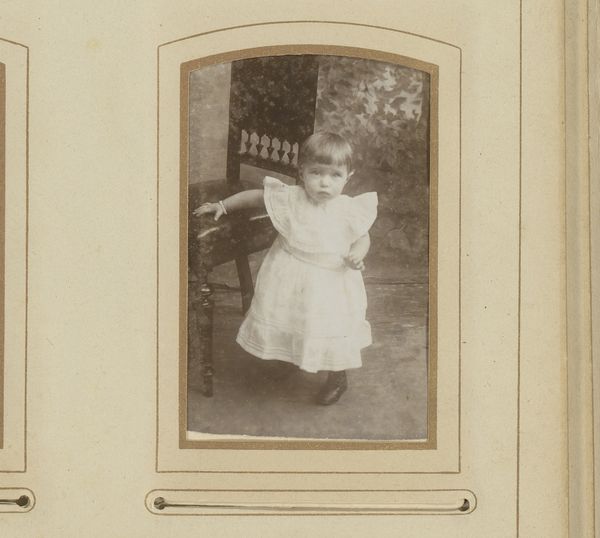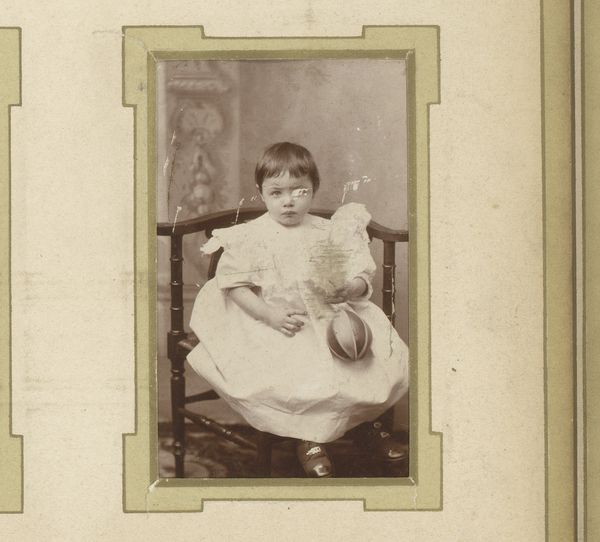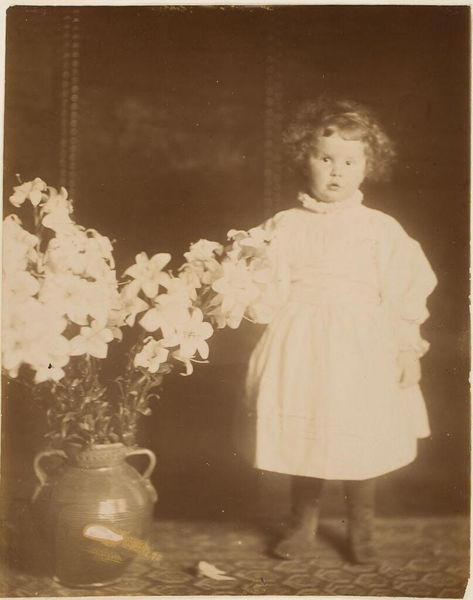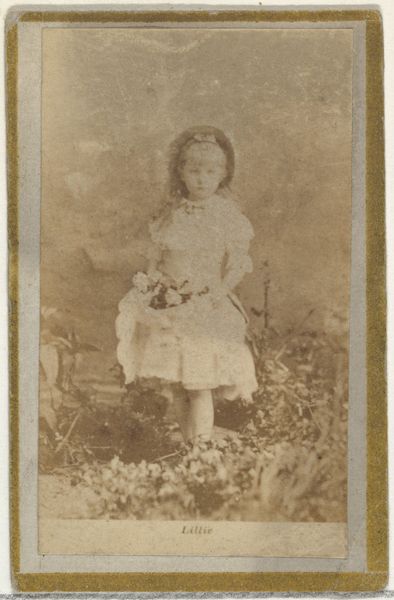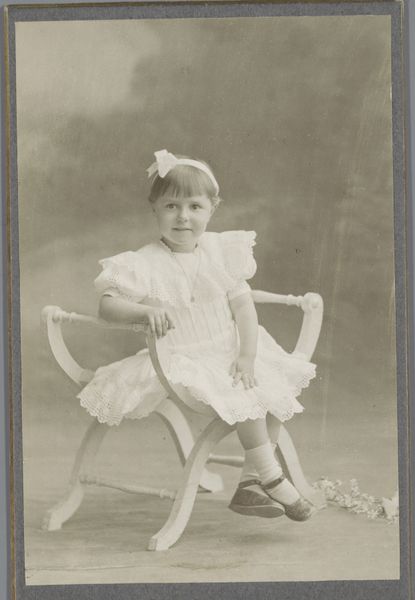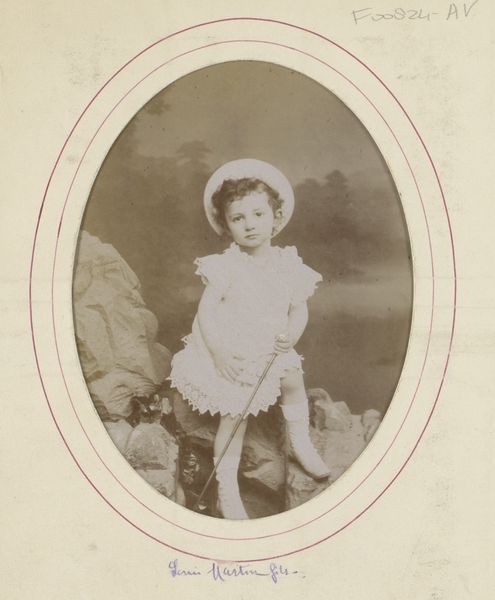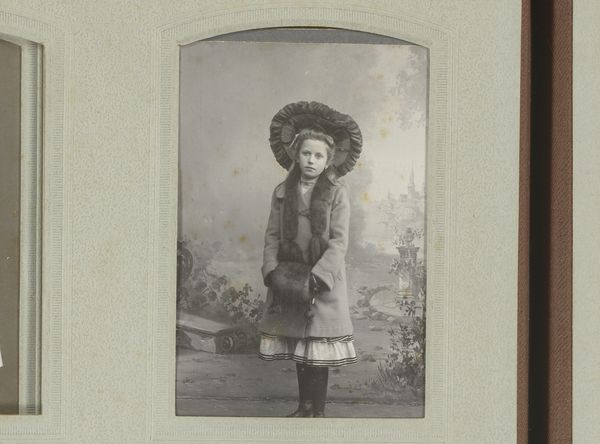
Portret van een peuter, spelend met schep en vorm, vermoedelijk in Frankrijk 1903
0:00
0:00
plein-air, photography
#
portrait
#
plein-air
#
charcoal drawing
#
photography
#
genre-painting
#
realism
Dimensions: height 56 mm, width 74 mm
Copyright: Rijks Museum: Open Domain
Editor: Here we have a captivating photograph from 1903, "Portret van een peuter, spelend met schep en vorm, vermoedelijk in Frankrijk," housed here at the Rijksmuseum. I'm really struck by how casually this image captures such a tender moment. What catches your eye when you look at this piece? Curator: It’s interesting to consider this seemingly spontaneous image within the context of late 19th and early 20th-century photography. Photography was becoming more accessible, yet portraits still carried a certain weight, didn't they? Even a seemingly candid shot like this might have been carefully staged, reflecting societal ideals about childhood innocence. Editor: That's fascinating! So you think there was more deliberate staging than what meets the eye? The child seems so relaxed and natural. Curator: Exactly. Notice the child’s clothing and the setting; plein-air was increasingly popular with the rise of impressionism. The image subtly promotes a vision of idealized domesticity. This connects with a broader historical narrative of childhood, family, and representation during this era. Consider also, who had access to photography? Who was able to immortalize these images, and why? Editor: That's a really good point; there's a definite class element involved in accessing new mediums. The photograph is in line with genre painting ideals, even. What can you infer about the subject based on those class dynamics at the time? Curator: Precisely! This photograph isn't just a simple portrait. It's a cultural artifact that offers insights into how childhood and family were perceived, idealized, and presented within specific social strata at the turn of the century. Editor: I see! It really recontextualizes the way I now understand its accessibility and historical position. Thanks for pointing that out!
Comments
No comments
Be the first to comment and join the conversation on the ultimate creative platform.
